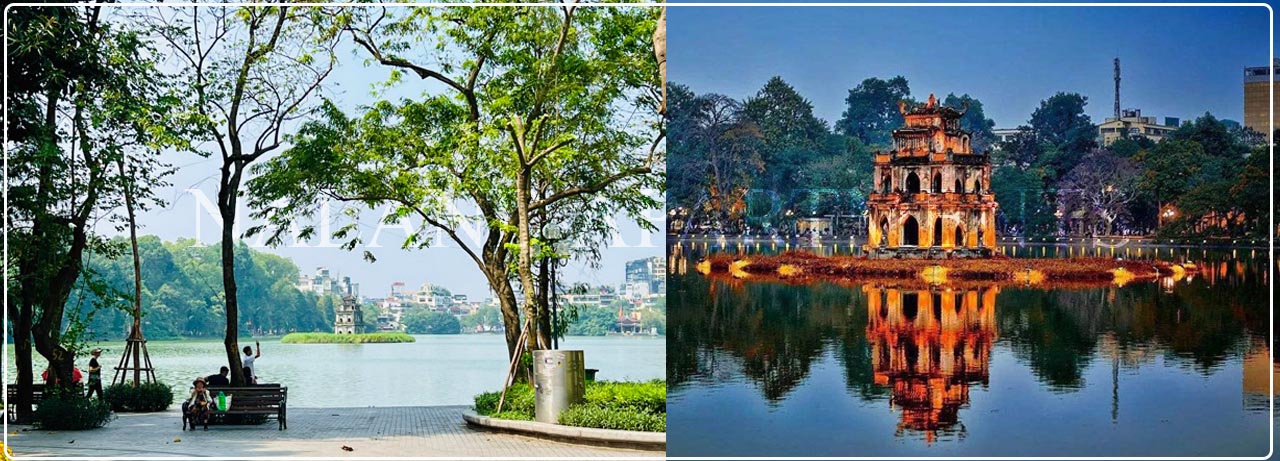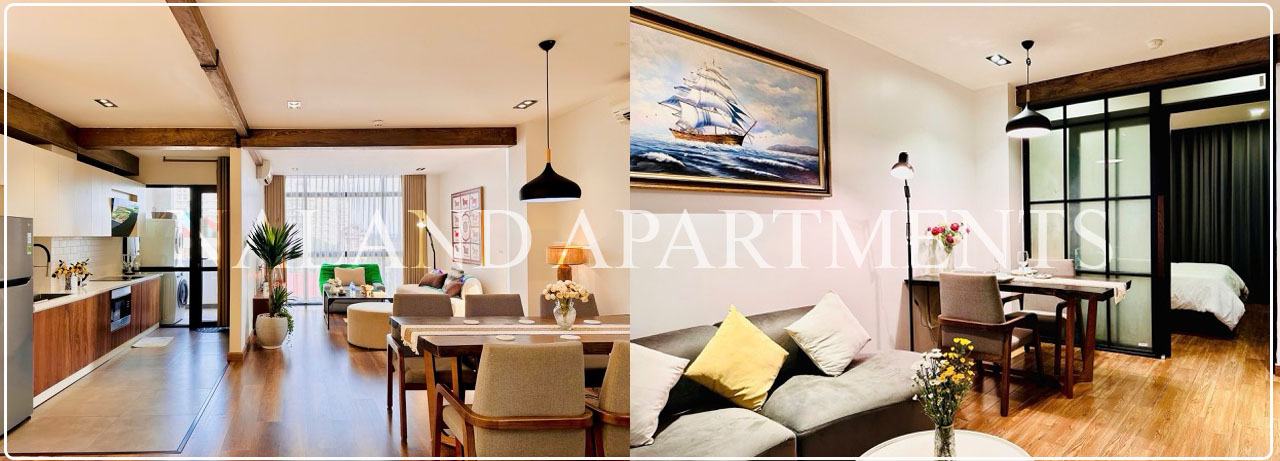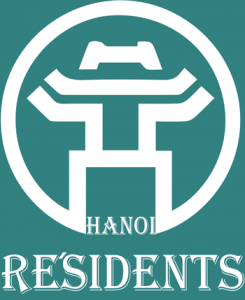Located in the heart of Hanoi’s Old Quarter, Hang Ngang Street is one of the most vibrant and historically rich streets in the capital. Though less than 200 meters long, Hang Ngang Street holds a special place in the hearts of Hanoians and travelers alike, thanks to its vintage charm, unique blend of French colonial and Eastern architecture, and, most importantly, its role in a pivotal moment in Vietnamese history—the birth of the Democratic Republic of Vietnam.
Location and How to Get to Hang Ngang Street
Hang Ngang Street lies in Hoan Kiem District, starting from the intersection with Hang Dao Street and ending at the junction with Dong Xuan and Hang Duong Streets. This two-way street is narrow and situated within Hanoi’s pedestrian zone, making it best explored on foot, by bicycle, or via xích lô (cyclo) for an authentic experience.
How to get there:
- From Hoan Kiem Lake: a 5–7-minute walk via Hang Dao Street.
- By taxi or motorbike: park nearby at Trang Tien Plaza or Dong Xuan Market.
- By bus: take routes No. 09, 14, 36, or 86, which stop near the Old Quarter.
📌To save time and costs during your business trip or vacation in the Old Quarter, it’s best to choose hotels or Airbnb apartments near the city center. With a wide range of apartment options and a 24/7 customer service team, Na Land Apartments is a popular choice for both domestic and international travelers visiting Hanoi in general and Hang Ngang Street in particular.
The History and Development of Hang Ngang Street
Hang Ngang Street is not only a commercial center but also a place steeped in layers of historical and cultural significance. Tracing the evolution of Hang Ngang Street reveals its transformation from a humble handicraft village to a pivotal site in Vietnam’s path to independence.
Hang Ngang Street – From a Handicraft Village to a Commercial Hub
The name “Hang Ngang” (literally “Horizontal Street”) reflects its East–West orientation across the Old Quarter. Originally, it was home to Chinese merchants—mostly of Cantonese origin—who settled in Hanoi to trade goods. Over time, the street became a bustling center of textile and silk trading during the 19th century.
Eventually, Hang Ngang Street evolved into a major commercial artery specializing in cloth, silk, ready-to-wear garments, and accessories, becoming one of the busiest trade routes in old Thang Long (Hanoi).
Hang Ngang Street’s Historical Significance with President Ho Chi Minh
Hang Ngang Street is forever etched in Vietnamese history for a monumental event: in August 1945, at house No. 48 Hang Ngang, President Ho Chi Minh wrote the Declaration of Independence that marked the foundation of the Democratic Republic of Vietnam.
Today, this location is preserved as a historic memorial house and welcomes visitors from across the world who wish to learn about Vietnam’s revolutionary history.
Architecture and Atmosphere of Hang Ngang Street
Hang Ngang Street is not only a hub of bustling commerce but also a showcase of Hanoi’s unique architectural identity. From traditional tube houses to vintage wooden shopfronts, Hang Ngang Street offers visitors a glimpse into the harmonious blend of old-world charm and colonial influence that defines the Old Quarter.
Tube House Architecture on Hang Ngang Street
Like many streets in the Old Quarter, Hang Ngang Street features distinctive “tube houses”—narrow-fronted homes that stretch deep into the lot. These buildings typically have 2–3 floors, with the ground floor used for commerce and the rear for living quarters. This architectural style reflects a harmonious blend of traditional Vietnamese design and French colonial influences.

Tube houses and shopfronts are characteristic features of homes on Hang Ngang Street (Photo: Internet)
Street-Facing Shopfronts – A Characteristic of Hang Ngang Street
The street is lined with hundreds of closely packed stores. Their signboards, often bold yet tasteful, contribute to the vibrant feel of Hang Ngang Street. Many shops retain their wooden facades and vintage shutters, exuding a nostalgic charm that draws in both domestic and international visitors.
Top Things to Do on Hang Ngang Street
From historic landmarks to vibrant street life, Hang Ngang Street offers a wide array of experiences that capture the essence of Hanoi’s Old Quarter. Whether you’re a history buff, a fashion enthusiast, a foodie, or simply a curious traveler, Hang Ngang Street has something unforgettable to offer at every turn.
1. Visit the Ho Chi Minh Memorial House at 48 Hang Ngang Street
This is a must-visit attraction on Hang Ngang Street. The two-story house once belonged to Trinh Van Bo, a patriotic businessman who donated it for use by Ho Chi Minh and the Viet Minh leadership during the August Revolution.

Ho Chi Minh Memorial House at 48 Hang Ngang Street(Ảnh: Internet)
Visitor Information:
- Address: 48 Hang Ngang Street, Hoan Kiem, Hanoi.
- Opening Hours: 8:00 AM – 11:30 AM and 2:00 PM – 4:30 PM (Tuesday to Sunday).
- Admission: Free.
- Highlights: President Ho Chi Minh’s working room, where he drafted the Declaration of Independence, and many historical artifacts.
2. Go Shopping on Hang Ngang Street
While it may no longer be the textile paradise it once was, Hang Ngang Street still thrives with fashion shops offering:
- Trendy outfits inspired by Korean and Japanese styles
- High-quality imported goods
- Affordable fashion accessories, handbags, and footwear
Tip: Bargaining is common. Check the quality carefully before buying.
3. Explore the Culinary Scene Near Hang Ngang Street
Adjacent to Hang Dao, Hang Duong, and Hang Buom streets, Hang Ngang Street offers quick access to Hanoi’s iconic street food scene.

Near Hang Ngang are Hang Dao, Hang Duong, and Hang Buom – famous streets for Hanoi’s cuisine (Photo: Internet)
Highlights include:
- Che Hang Can: a traditional sweet soup shop near the Hang Ngang–Hang Dao intersection.
- Trang Tien Ice Cream: a short walk away, this legendary Vietnamese treat is beloved across generations.
- Pho, Bun Cha, Bun Thang: various family-run eateries nearby serve up authentic northern flavors.
- Sidewalk cafés and lemon tea stalls: perfect for watching life go by in true Hanoi fashion.
4. Join the Weekend Walking Street Around Hang Ngang Street
Every weekend, the area around Hang Ngang Street becomes a pedestrian zone filled with cultural activities, street performances, and traditional games. Visitors can walk from Hang Ngang through Hang Dao to Hoan Kiem Lake, soaking in the festive, lively atmosphere while discovering the cultural soul of Hanoi.

The Hoan Kiem Lake pedestrian zone near Hang Ngang Street is always bustling on weekends (Photo: Internet)
Hoan Kiem Lake Walking Street, active from Friday evening to Sunday night, stretches across Hang Dao, Hang Ngang, and connects to the lakeside area. This car-free zone transforms the heart of Hanoi into a vibrant cultural space, where locals and tourists enjoy music, folk games, art performances, and street food in a safe, festive environment.
Cultural and Historical Values of Hang Ngang Street
Despite the pressures of urbanization and commercialization, Hang Ngang Street still retains much of its original charm and identity, thanks to conservation efforts by local authorities and the community. Preserving Hang Ngang Street means safeguarding not only a street’s beauty but also the historical and spiritual foundation of modern Vietnam.

Amidst rapid urban development, Hang Ngang Street still retains its timeless, ancient charm (Photo: Internet)
It was here that a small street bore witness to a momentous chapter in the nation’s history, as Ho Chi Minh prepared to declare Vietnam’s independence. These values continue to inspire generations and are an integral part of Hanoi’s legacy.
Tips for Visiting Hang Ngang Street
To fully enjoy the charm and cultural richness of Hang Ngang Street, visitors should keep a few simple yet important guidelines in mind. These practical tips will help ensure a respectful, enjoyable, and meaningful experience while exploring one of Hanoi’s most historic streets.
- Dress modestly, especially if you plan to enter historical or cultural sites.
- Keep the street clean—avoid littering or spitting in public.
- Respect local life—many families still live here, so avoid loud noises or disturbances.
- Photography: Always ask before taking pictures of residents or inside private premises.
Conclusion: Why Hang Ngang Street Is a Must-Visit in Hanoi
Hang Ngang Street is not just a shopping destination—it’s a living museum, a cultural gem, and a witness to Vietnamese history. From its architectural beauty and vibrant commercial life to its connection with national independence, Hang Ngang offers a rare glimpse into Hanoi’s timeless spirit.
Amidst the rush of modern life, this street continues to echo the stories of resistance, heritage, and identity. For any visitor wanting to truly understand Vietnam, a stroll down Hang Ngang Street is more than a walk—it’s a journey through time.
>>>If you are immersed in Hanoi. Then some of the following articles will be very suitable for you to explore more about this beautiful land:
- Hang Bac Street – A Glorious Legacy in the Heart of Hanoi’s Old Quarter
- Trang Tien Street: A Vibrant Cultural and Historical Icon in the Heart of Hanoi
- Hoan Kiem Lake Walking Street: The Vibrant Heart of Hanoi
- Old Quarter Ta Hien Corner: Dive Into the Lively Heart of Hanoi’s Old Quarter
Naland Apartment – Hanoi Serviced Apartments – Prestige – Quality – Customer experience is the top priority.
🏢 Address: No. 18a, Lane 31/46, Xuan Dieu Street, Tay Ho
📩 Email: hanoiresidents@gmail.com
📞 Hotline: +84 971 84 84 88








